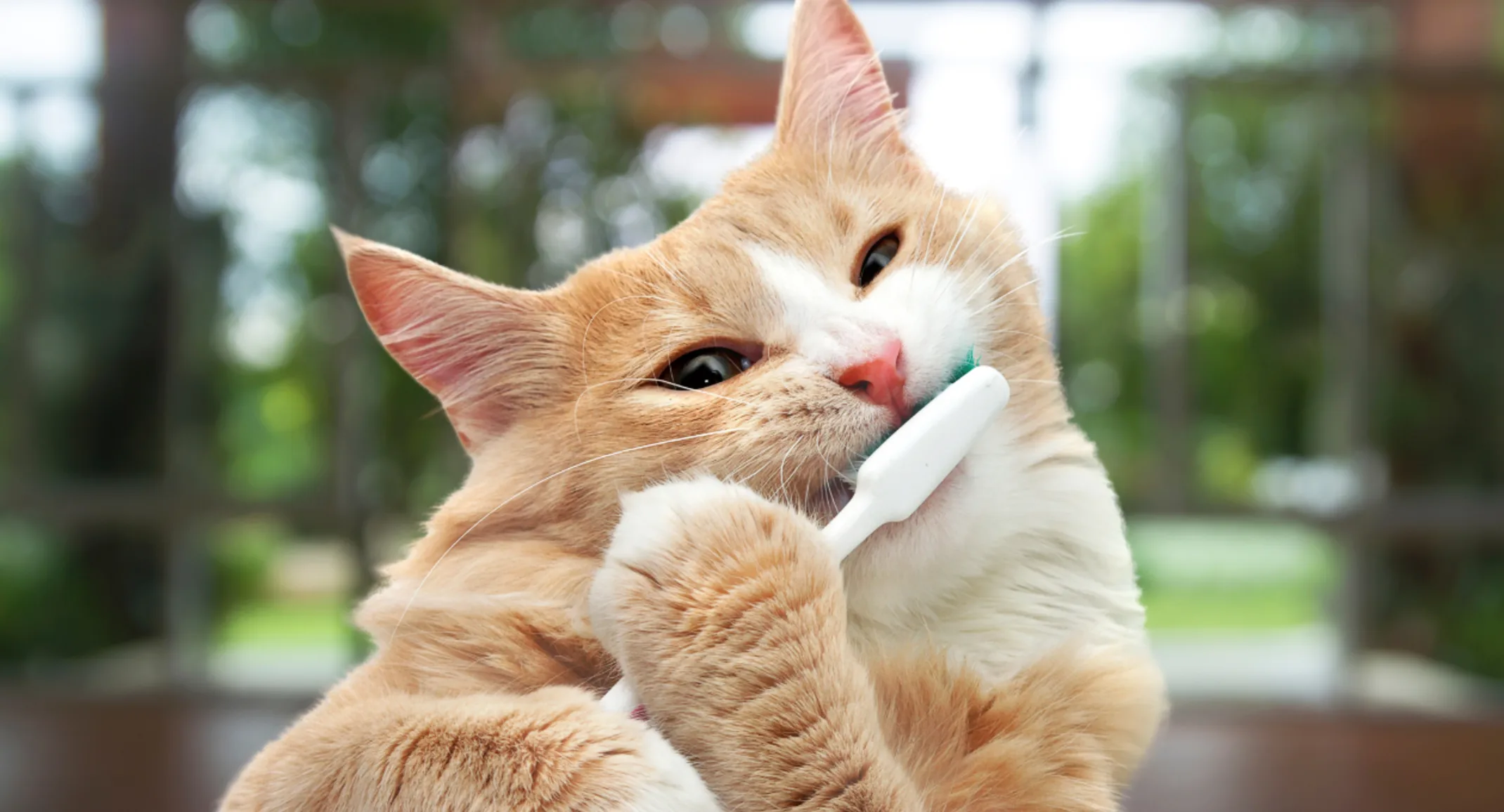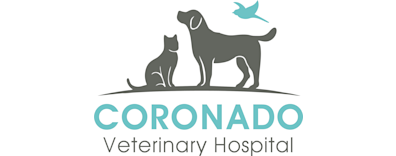Dog and Cat Dentistry Explained
May 19, 2025 · Veterinary Services

“The vet is recommending my dog get a teeth cleaning, but he has to go under anesthesia and I’m scared! What should I do? Is a teeth cleaning really necessary? Is it safe?”
We know that most pets over the age of 3 have periodontal disease. Dental problems are extremely common in small breed dogs and it only gets worse as our pets get older. The procedure to clean and assess the teeth is called a Complete Oral Health Assessment and Treatment (sometimes abbreviated as COHAT). Often, the procedure evokes a tremendous amount of anxiety, both from the risk of anesthesia and the potential for costly extractions.
At Coronado Veterinary Hospital, we want you to feel confident and informed. In this guide, we walk you through the full dental procedure - often referred to as a COHAT (Complete Oral Health Assessment and Treatment).
The Drop Off:
Make sure you arrive on time. The surgery schedule runs like a machine and delays will only cause problems. You should anticipate at least 10-15 minutes of time needed in the morning to get checked in by the surgery staff. The surgery staff will want to make sure your pet is ready for anesthesia and that all the forms have been completed.
Preoperative Period:
Once you head out the door, your pet will get settled in for the day in a kennel. If your pet shows signs of any type of kennel anxiety, the CHILL protocol will be utilized to make the time with us as fear free as possible. Your pet’s medical records will be generated, on both paper and electronically.
Pre-anesthetic bloodwork will be done if your pet hasn’t had any recent bloodwork done in the 2 weeks prior. The veterinarian is looking for any issues that may affect anesthesia (kidney or liver compromise, anemia, infection, etc.) or would warrant delaying the procedure entirely. The veterinarian will also perform a pre-anesthetic exam focusing on gum color, heart and lung sounds, and overall demeanor. Once all the anesthetic candidates are examined that morning, the veterinarian will come up with an order based on what procedures were scheduled and if any pet needs additional treatments.
When it’s your pets turn on the anesthesia schedule, pre-anesthetic sedatives will be given to relax your pet. An IV catheter is placed, often in your dog or cat’s arm, to allow administration of IV medications and fluids. This often involves the administration of multiple medications simultaneously. By using drugs from different pharmacological classes, we can use lower doses and achieve safer anesthesia. The exact medications used will be based on your pet’s procedure, temperament, age, underlying disease processes, hospital protocols, and doctor preferences.

Anesthesia:
Once your pet is relaxed, anesthesia can begin. Typically, medication is given through the IV catheter that causes your dog or cat to fall asleep and lose consciousness. Once asleep, a tube is passed into the airway to protect the lungs and keep your pet asleep breathing inhalant gas.
Monitors are placed on your pet to ensure they are tolerating anesthesia well:
ECG: Measures the electrical activity of the heart, as well as the heart rate
Pulse oximetry: Measures the oxygen levels of the blood
Capnography: Measures the expired carbon dioxide content of the exhaled breaths, as well as respiratory rate
Temperature
Blood pressure
All these things are done to decrease risk and minimize complications.
Dental scaling:
A trained veterinary technician or veterinary assistant scales the calculus off the teeth on the crown and under the gumline using equipment identical to what you see at your dentist office. The teeth are then polished and fluoride applied.

Dental X-ray:
Full mouth x-rays are taken of the tooth roots to evaluate for disease.

Dental Exam:
Once the teeth are clean and the x-rays are ready for review, the veterinarian will perform a full oral exam. A thorough dental exam involves a visual inspection of the oral cavity, probing for periodontal pockets and checking every tooth. A dental chart is used to describe any significant changes or problems. The teeth are assessed for abnormal color, enamel defects, large pockets in the gum around the tooth, bone loss, mobility, and other problems. The x-rays are also evaluated, and the veterinarian puts together the results of these test to determine if additional treatments are necessary. Dental extractions will then be performed if needed. Oral surgery in a pet is a complex thing and take extra time. The veterinarian may have to do a gingival flap in order to get to the roots that need to be extracted. You pet will also receive local anesthesia (aka a block) prior to any extractions, like you as a human would at the dentist.
Once the dental treatment is complete, your pet is ready to wake up. The anesthetic gas they are breathing is turned off and within a few minutes they should start to wake up. Once your dog or cat can swallow on their own, the tube is removed from the airway and they are returned to their kennel for monitoring.
Most dogs and cats need a few hours of observation and heat support until they are ready to head home. Anesthesia can make them feel funny and sleepy for the rest of the day, and maybe into the following day. Let your dog or cat recover at home in a quiet environment, and don’t be too worried if they seem a little “off” the next day. It’s typical for appetite and bathroom habits to be a little abnormal for a couple of days after anesthesia as well. If your dog or cat is acting extremely painful, refusing all food, vomiting, or having diarrhea, or if the effects of the anesthesia haven’t worn off after the next day, please give us a call.
Home Dental Care:
Now that your pet’s teeth are clean, it’s the perfect time to start home dental care. There are four general options:
Brushing. Brushing your pet’s teeth is the most beneficial. Daily brushing removes calculus from the surface of the teeth. You can use a soft tooth brush and water. Enzymatic toothpaste can also be used to make the cleaning more effective. The use of fluoride toothpaste should be avoided since your pet is definitely going to eat it!
Dental chews. A variety of dental chews are available on the market to help scrape material off the teeth and fight bacteria in the mouth.
Water additives. These products help clean the mouth and reduce bacteria. Any pet with extractions will be sent home with a water additive to assist with healing.
Dental diets. Dental diets are formulated to remove build up from the teeth while chewing and bind calcium in the mouth to prevent the formation of hard dental calculus.
For any at home care to be effective, it must be consistent. While brushing is the most effective approach, it’s not going to work if you’re only doing it once a month. Be realistic about your lifestyle and pick a product that you can see yourself using daily.
Daily use of these products have been awarded the Veterinary Oral Health Council seal of product approval and are shown to be the most effective products to keep your pet’s teeth clean and the gum tissues and bone around the roots healthy. Whenever you introduce a new dental care product, take it slow. Introducing one product at a time can help determine the cause of any dietary intolerances your pet may have to a new treat or chew.
Hopefully, you have a better understanding of what happens when you leave your dog or cat for a dental cleaning at Coronado Veterinary Hospital.
